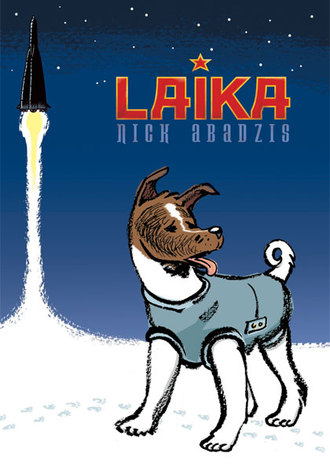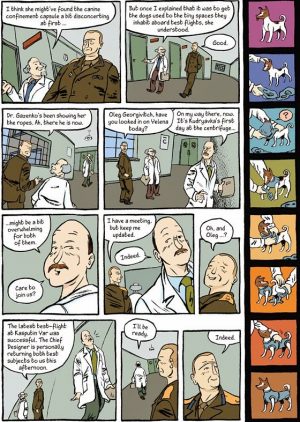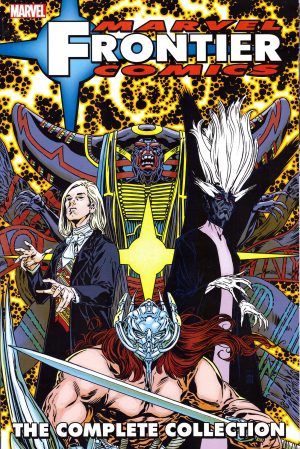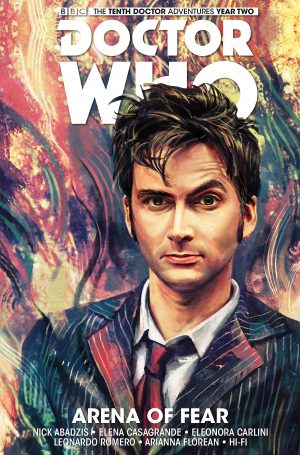Review by Karl Verhoven
Her celebrity status has now faded, but there was a time when Laika was the world’s famous dog, being the first living creature to travel into space. In celebrating human achievement, the stories generally stopped short of indicating that the Sputnik 2 craft in which she travelled was never intended to return to Earth.
However, it’s not with Laika that Nick Abadzis begins, but Sergei Korolev, just released from a Siberian gulag, but without transportation, so rendering his chances of survival in the snowstorms slim. He believes himself a man of destiny, and is. Much of Laika concerns his brilliance in the face of impossible demands, the first being that he launch a second Sputnik satellite just a month after the original in order to coincide with the Russian Revolution’s 40th anniversary. Furthermore, it should also carry a living creature.
Abadzis supplies research references at the back, indicating the broad base of Laika is true, but he fictionalises aspects extremely well, providing a strong emotionally connecting presentation of Laika’s early life. It features a broad range of personalities, each of them well defined with their behaviour explained in what could almost be unsentimental excerpts from Dostoevsky’s 1850s Russia rather than a century later. As shown on the sample art, this is rarely with fewer than a dozen small panels to the page, and the scenes he constructs are so heartbreaking they’ll have readers on the edge of their seats despite knowing Laika’s ultimate destiny.
Because the fictional aspects don’t extend to talking dogs, Laika’s story is told via the people she connects with. When she’s with the military, Abadzis introduces a new cast, and conveys the Soviet era suspicion, procedure and formalities. “Dubrovksy’s a clever girl”, Dr Oleg Gazenko is told about a new appointment made without consulting him, “none of the other applicants came close”. “Plus she’s Major General Pokrovsky’s neice”, Gazenko drily responds. It turns out Yelena Dubrovsky is smart, capable well beyond the dog handling duties she’s assigned, and she’s one among several characters astutely presented by Abadzis so readers know what they feel without it being spelled out. Dubrovsky and Gazenko become the leading characters, fond of the dogs being tested for the space programme and under considerable pressure despite being privileged by Soviet standards.
It’s a heartbreaking story of mistreatment in so many respects, with the cast from the early chapters occasionally seen again, briefly and poignantly, and ends with Gazenko’s telling statement that Laika’s demise did nothing to advance the knowledge of space flight. It’s emphasised throughout how Laika’s personality affects people, and Abadzis equally notes who she bonds with. Sad and memorable, Laika is a story to stay with readers. Make sure you’re among them.
However, if you’d prefer a happier ending that diverges from reality, Abadzis was later considerate enough to supply that. Read it here.





